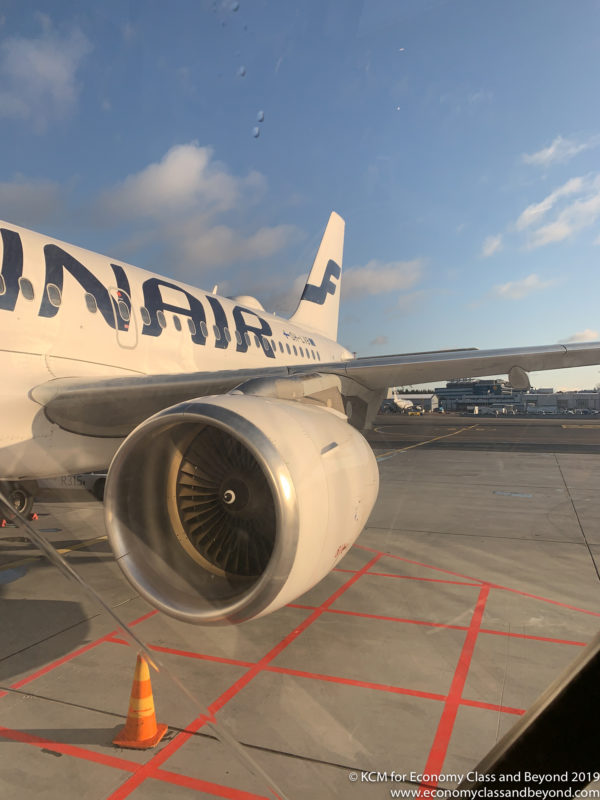Finnair has been busy, as it purchases 750 tons of Neste MY Sustainable Aviation Fuel in an effort to be more reduce emissions and become more sustainable.

Finnair Airbus A320 at Helsinki Airport – Image, Economy Class and Beyond.
As airlines seek to race towards net-zero targets, Finniar is seeking to reduce the emissions it emits from flying. Thus, they aim to balance out part of their part using Sustainable Air Fuel (SAF).
The fuel will be used for flights departing from Helsinki Airport. Finnair’s customers are also involved in reducing carbon dioxide emissions from flights, as a small part of the price of each flight ticket is directed to the costs of using sustainable aviation fuel.
With Finnair seeking to achieve carbon neutrality by 2045, sustainable aviation fuel will be one of the most essential tools for reducing air travel emissions in the coming years for the airline. According to the airline, utilising Neste’s MY Sustainable Aviation Fuel reduces greenhouse gas emissions by up to 80% over the fuel’s life cycle compared to using fossil jet fuel.
The fuel volume now purchased is Finnair’s largest single batch of sustainable aviation fuel purchased to date. The SAF will be delivered by Neste to Helsinki Airport in early 2023. The 750 tons of SAF corresponds to approximately 400 flights between Helsinki and Stockholm using unblended, 100% SAF. It is important to bear in mind that engine and flying programmes qualifying 100% SAF usage are still in progress – so it is highly likely that the fuel will be blended in the first instance with traditional Jet1-A.
The use of SAF will also be increased due to the upcoming EU obligation to use SAF, with Finnair pooling with the oneworld procurement programme to purchase more SAF and using up to 10% SAF by 2030.
In Quotes
Eveliina Huurre, Finnair’s SVP, Sustainability said:
“Finnair celebrates its 100th anniversary this year and reducing emissions from flying is essential to a sustainable future. In the coming years, sustainable aviation fuel will be one of the most important tools for reducing aviation-related emissions. We also involve our customers in this, and a small part of every flight ticket sold goes to the cost of sustainable aviation fuel,”
“In addition, customers can reduce the emissions of flying by using our carbon offsetting service, which combines SAF purchases and certified offsetting projects.”
Jonathan Wood, Vice President, Commercial and Technical Development, Renewable Aviation at Neste added.
“Finnair was one of the first airlines using our Neste MY Sustainable Aviation Fuel and we have been working together for a long time,”
“SAF is the most effective tool currently available to reduce the emissions of air travel and it is great to see Finnair taking the initiative to voluntarily purchase our SAF as part of their sustainability commitments and creating awareness among their customers on how these can play a role in creating a more sustainable future for aviation, too”
It does come at a consumer’s cost though
For those who think that Finnair is doing it out of love and environmental commitment, the airline is putting that to rest. Finnair notes that with them increasing the use of SAF m it will increase the airline’s costs, as SAF is more expensive than fossil fuel.
Finnair is preparing for this by allocating a small portion of each flight ticket sold, about 20 euro cents per ticket, to the cost of sustainable aviation fuel.
However, there is an ominous note, with them noting his share may be higher in the future as the operating obligations imposed on airlines increase the use of SAF.
Filling in part of the transition gap.
As the aviation industry knows SAF is a transition point, but one that allows “drop-in replacement” in most respects to the current fuel sources used – at a cost of course.
SAF’s constraints are twofold – there is still a lot of knowledge that airlines and OEMs need to understand how it impacts aircraft and the sheer volume of SAF needed to even begin to compete with traditional kerosene fuels.
Remember, that 750 tonnes will cover 400 flights between Helsinki and Stockholm one way if a 100% SAF is used. In the grand scheme of things – that isn’t many flights.
It will take both governmental and commercial efforts to increase SAF production in a controlled manner. Because SAF will need to compete for places to grow or be generated from.
But starts are welcome. Further momentum will be better, as will alternative fuel sources in the longer term.
Welcome to Economy Class and Beyond. Your no-nonsense guide to network news, honest reviews, in-depth coverage, unique research, as well as the humour and madness I only know how to deliver.
Follow me on Twitter at @EconomyBeyond for the latest updates, as well as Mastodon too! You can follow me on Instagram too!
Also, remember that we are part of the BoardingArea community, bringing you the latest frequent flyer news from around the world.